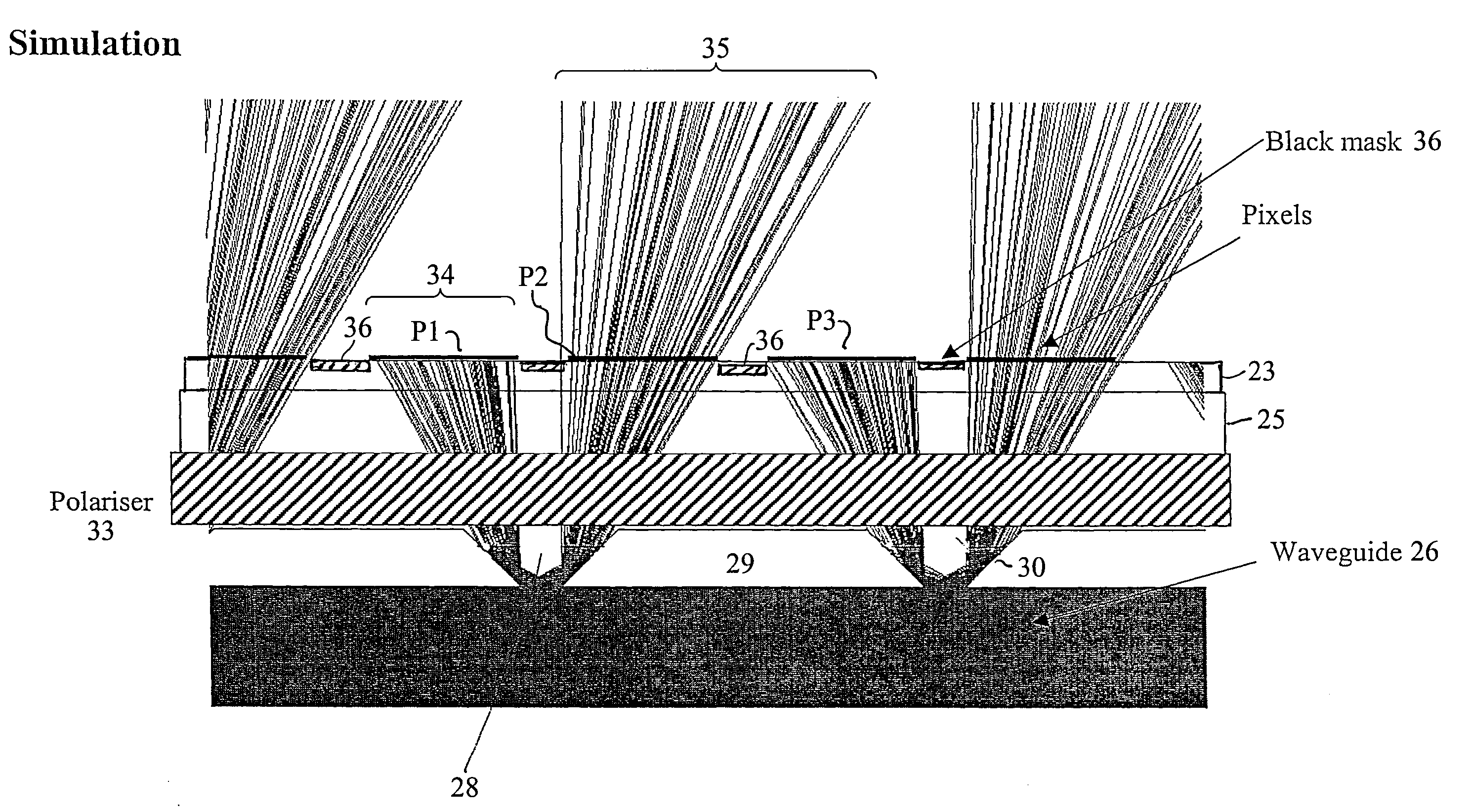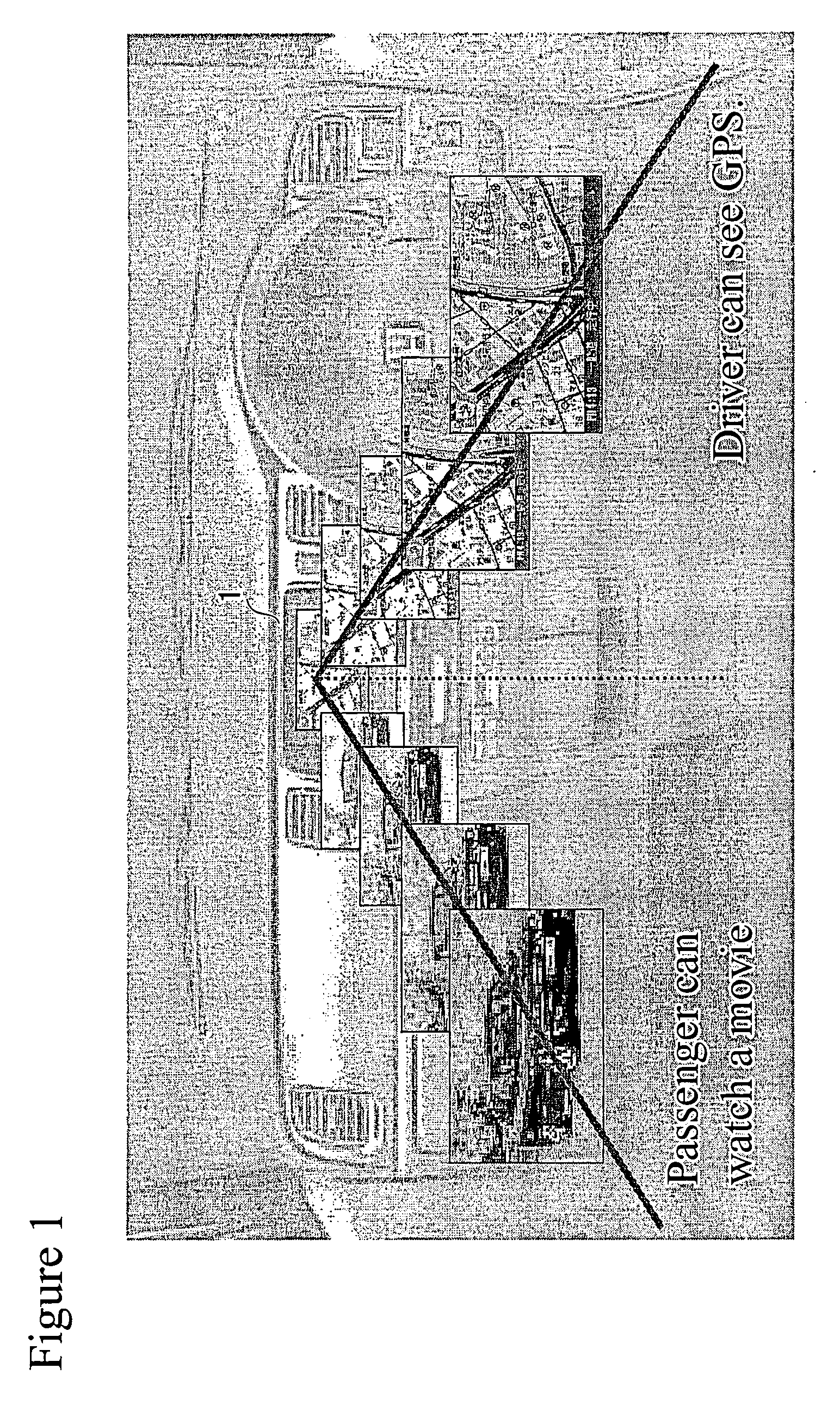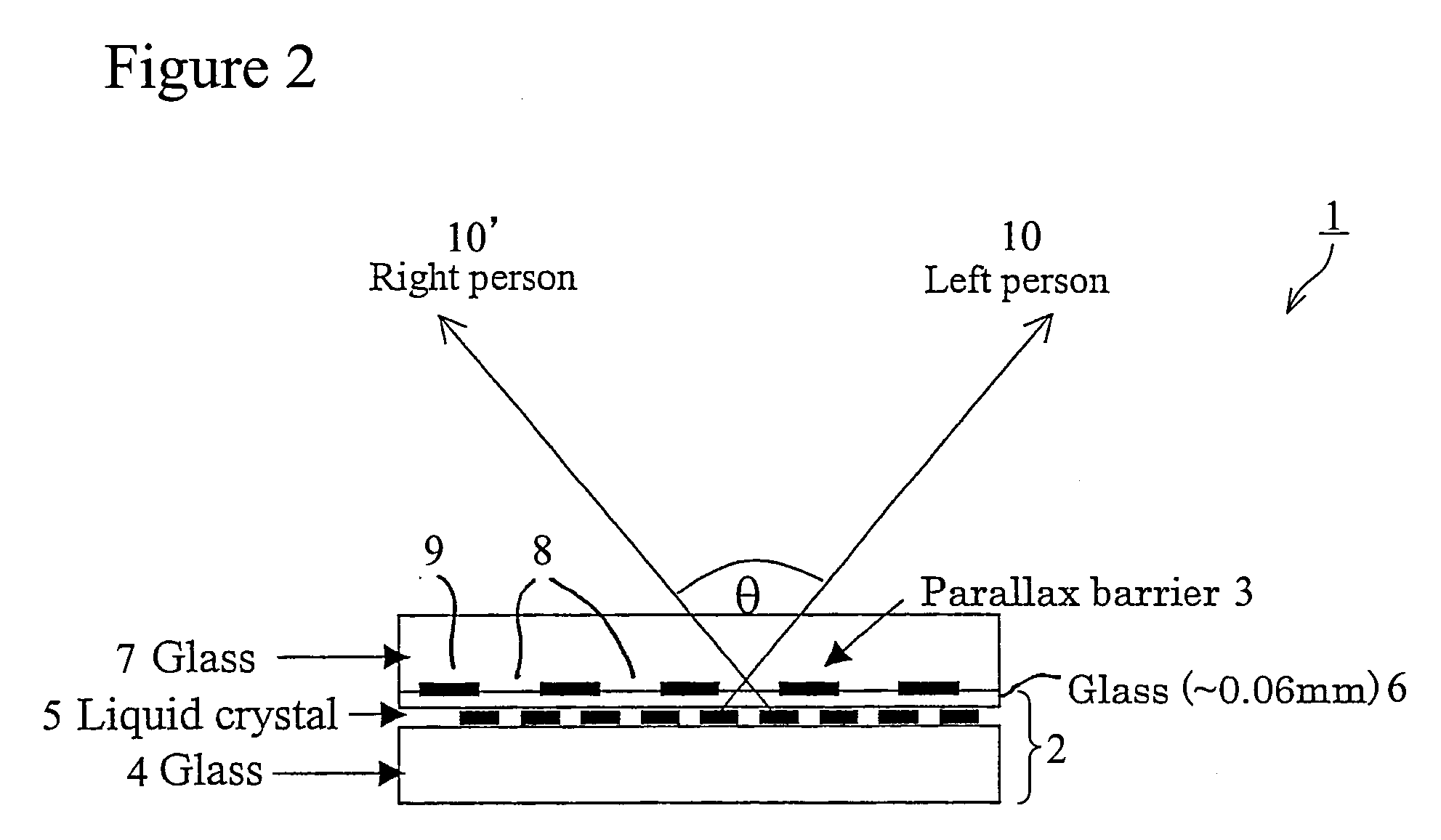Display
a technology of display and backlight, applied in the field of display, can solve the problem that the backlight does not provide uniform illumination over the area of the spatial light modulator (slm), and achieve the effect of low brightness and low observer head freedom
- Summary
- Abstract
- Description
- Claims
- Application Information
AI Technical Summary
Benefits of technology
Problems solved by technology
Method used
Image
Examples
second embodiment
[0164]FIG. 8A is a schematic plan sectional view through a display 38 according to the present invention. The display 38 again comprises a transmissive spatial light modulator 21 disposed in front of a backlight 22. The SLM 21 may be any conventional SLM, and will not be described in detail. It will be assumed for the purpose of description that the SLM 21 comprises a liquid crystal layer, but the invention is not limited to this.
[0165]The backlight again comprises a waveguide 26 that is illuminated by one or more light sources 27 disposed along respective side edges of the waveguide 26. Most of the exit face of the light guide 26 is totally internally reflective to light propagating within the waveguide, but the front face of the waveguide comprises a plurality of regions 39 that are not totally internally reflective for light propagating within the waveguide. These non-TIR regions 39 form “light extraction points” at which light is extracted from the waveguide 26.
[0166]In the disp...
third embodiment
[0175]FIG. 9 is a schematic sectional plan view of a display 40 according to the present invention. The display 40 again comprises a transmissive pixellated spatial light modulator 21 and a backlight 22 provided for illuminating the spatial light modulator 21. The display 40 corresponds generally to the display 20 of FIG. 3, and the description of components common to both displays will not be repeated.
[0176]In the display 40, a birefringent material 41 is disposed over the exit face of the waveguide 26 of the backlight at regions where it is desired that light is extracted from the waveguide 26. The birefringent material 41 is disposed immediately adjacent to the exit face of the substrate at these locations, so that the regions of the exit face of the substrate where the birefringent material 41 is provided become non-totally internally reflecting for light of a first polarisation state. This requires that the birefringent material 41 has a refractive index for light of the first ...
PUM
| Property | Measurement | Unit |
|---|---|---|
| angle | aaaaa | aaaaa |
| angle | aaaaa | aaaaa |
| angle | aaaaa | aaaaa |
Abstract
Description
Claims
Application Information
 Login to View More
Login to View More - R&D
- Intellectual Property
- Life Sciences
- Materials
- Tech Scout
- Unparalleled Data Quality
- Higher Quality Content
- 60% Fewer Hallucinations
Browse by: Latest US Patents, China's latest patents, Technical Efficacy Thesaurus, Application Domain, Technology Topic, Popular Technical Reports.
© 2025 PatSnap. All rights reserved.Legal|Privacy policy|Modern Slavery Act Transparency Statement|Sitemap|About US| Contact US: help@patsnap.com



